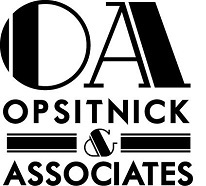As of late, there has been a lot of talk in the country about what is and is not disrespectful to the American flag, initiated by athletes “taking a knee” during the national anthem. As such, I think it’s important to take a look at the language of the Flag Code and see just what’s going on.
The Flag Code is federal legislation, developed by the American Legion in 1923 and enacted in 1942. However the Flag Code is advisory only and is not enforced. The Flag Code provides as follows:
– The flag should never be flown upside down except as a signal of dire distress in instances of extreme danger to life or property
– The flag shall never touch anything beneath it (e.g. the ground, water, merchandise, etc.)
– The flag shall never be carried horizontally or flat, but always aloft and free
– The flag shall never be used as any sort of apparel, bedding or drapery. The red, white and blue bunting that we see on podiums and other areas as a decoration is permitted with the blue on top, white in the middle and red on the bottom
– The flag shall not be used as a ceiling cover
– The flag shall not have any mark, insignia, drawing, design, etc. placed upon it
– The flag shall never be used as a receptacle to carry or receive anything
– The flag shall not be used for any advertising purposes of any kind. It shall not be embroidered on napkins, cushions, etc., and it shall not be printed on anything that is designed for temporary use and then discarded. No advertising signs should be attached to a staff or halyard from which the flag is flying
– When flying multiple flags, the American flag shall be placed at the highest height of them all, with the exception of other nations flags during a time of peace. Each national flag shall be flown from a separate pole, be of the same size and flown at the same height
– The flag cannot be used as a costume or athletic uniform, though a flag patch may be affixed to the uniforms of military personnel, firemen, policemen or members of a patriotic organization. A lapel flag pin must be worn on the left side close to the heart, as the flag is considered a living entity
– When the flag reaches a condition that is no longer fit for display, it should be disposed of in a dignified way, preferably by burning
Looking at all of the above provisions, which incidentally are not comprehensive, it is clear that the flag is treated and has become an item of merchandise, something far from the actual purpose of the flag. Perhaps people cherry pick their instances of disrespect to the flag, becoming enraged at kneeling and flag destruction, but ignoring numerous other actions in contravention of the flag code. There is no prohibition against kneeling at a flag presentation.
Also, flag burning or other desecration has been held lawful by the US Supreme Court as these acts are protected speech within the First Amendment. Those cases are Texas v Johnson, 1898 and US v Eichman, 1990.
With the above to be considered, in my opinion, the most important thing to remember is that you should know what is and isn’t disrespectful to the flag, and what is legal, before taking to social media or otherwise to denounce anyone else.
Zach Opsitnick
